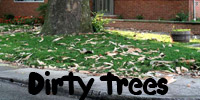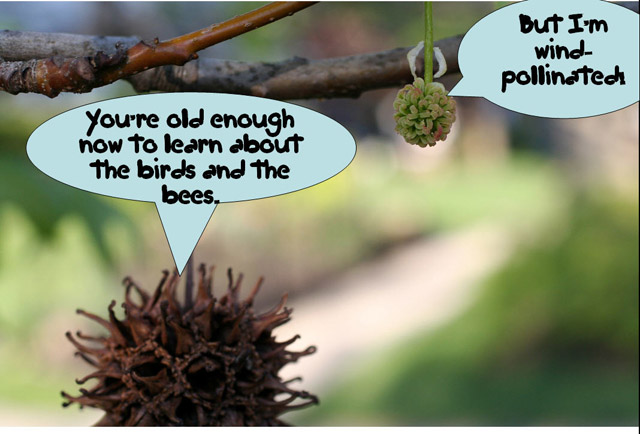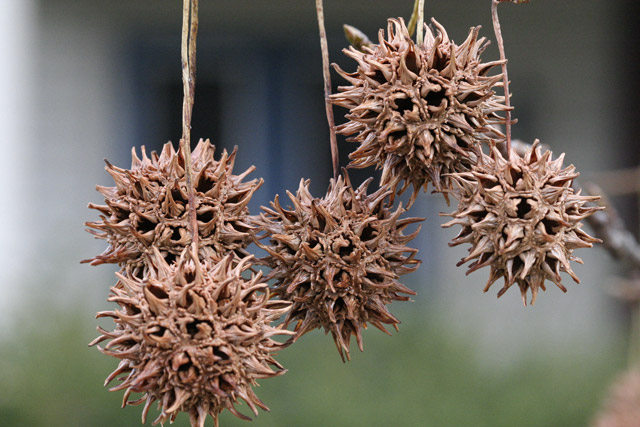


|
Tree Flowers (and fruits)
Sweetgum
Everybody loves sweetgum trees because of the fun time they have raking up the spiny
clusters of fruits from lawns, sidewalks, etc. Liquidambar styraciflua (family Altingiaceae, although older works, including many still in use, place sweetgum in the Hamamelidaceae) is native to
Ohio, but just barely, as it is primarily a southeastern swamp
tree seen here mostly along streets and on lawns.
There's one in the Clintonville neighborhood of Columbus that seems to
produce delightfully larger-than-average gumballs, shown here flowering
in April, 2006.
Like many trees, sweetgum is monoecious, producing unisexual flowers different parts of the same tree.
Sweetgum flowering, April 26, 2006, Columbus, OH.
Sweetgum's
staminate flowers are produced in spherical heads presented in
upright elongate clusters of about a dozen heads each. The pistilate
flowers are also in heads, but
the heads are solitary. The use of the word "heads" is used here as a
colloquial synonym for "capitulum." A capitulum is a kind of
infloresence in which many usually small flowers are all attached at
the same point on the flowering stem (the peduncle), and the individual flowers are stalkless (sessile).

Sweetgum pistillate flower head and a persistent fruiut from last year, April 26, 2006, Columbus, OH.
These big spiny things of which there are five shown below are not the fruits per se,
but are multiples of many small fruits. Each 2-parted sub-unit, of
which there
seem to be about 60 per gumball, is a dry fruit all on its own, which
originally was the ovary of a tiny individual flower. (A fruit is
a ripened
ovary containing seeds.) Since they stay together at maturity
the gumball is an example of a multiple fruit. More precisely, it is a
multiple of capsules, as the little units are in fact capsules, i.e., dry
fruits that split open along more than one seam to release seeds.

Sweetgum multiple fruits, November 27, 2007.
|

